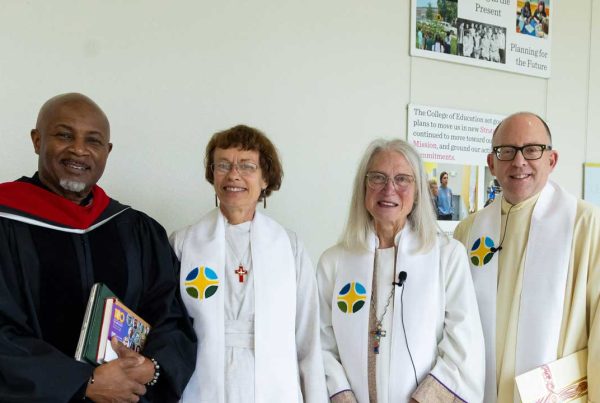Do you know how Mardi Gras started, why it is significant, and why it is so inextricably tied to the season of Lent? Members of the CTS community who attended the Mardi Gras celebration on Tuesday, February 21st do thanks to Louisiana native Dr. Nicole Robertson. Dr. Robertson is Assistant Professor of Clinical Mental Health Counseling and serves as the Director of the Clinical Mental Health Counseling Program at CTS.
Here are some interesting facts from Dr. Robertson’s presentation:
- The origins of Mardi Gras date back to the 17th and 18th centuries in Rome and Venice. This is why there is such a tie to the Roman Catholic season of Lent celebrated by many faith traditions
- The French explorer Jean-Baptiste Le Moyne de Bienville arrived in the Americas in 1699 about 60 miles south of New Orleans in what today is called Mobile, Alabama. In 1702 they celebrated the first Mardi Gras in Mobile – New Orleans first celebrated Mardi Gras in 1718
- Fat Tuesday comes from the French words Mardi (Tuesday) and Gras (fat). Fat Tuesday celebrations are held worldwide on the Tuesday before Ash Wednesday and the Christian season of Lent
- King Cakes are a Mardi Gras tradition that links to an understanding of Epiphany; Mardi Gras is not one day, but a season of celebration that begins on January 6th (known as King’s Day or the Twelfth Night, the historical marking of the arrival of the three wisemen to deliver gifts to baby Jesus). The baby Jesus hidden in the King Cake reflects this origin
- Mardi Gras colors are purple (representing justice or royalty), gold (power), and green (faith). Mardi Gras krewes threw beads and trinkets in these colors to those they felt represented justice, power, and faith
- The Krewe of Zulu was known for throwing painted coconuts at their parades, but due to safety concerns they now hand these out
- Female krewes emerged in the late 1970s
- Mardi Gras Indians are African American individuals in the inner city who are not often seen by the popular Mardi Gras crowds. Every year new suits are created and worn by Mardi Gras Indians in an effort to respect and honor indigenous people groups who assisted African Americans in escaping from the tyranny of enslavement
- As the full day of Mardi Gras parades comes to an end on Fat Tuesday, the focus shifts from celebration to reflection as people begin to discuss what they will give up for Lent
You can view Dr. Roberson’s full presentation below.






